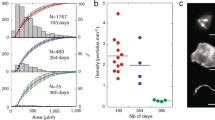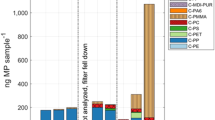Abstract
Observations of damage to vegetation, acute reductions in surface water pH, and kills of small fish prompted the Biomedical Operations and Research Office at the John F. Kennedy Space Center to initiate intensive environmental evaluations of possible acute and long-term chronic impacts that may be produced by repeated launches of the space shuttle. An important step in this evaluation was the identification of deposition patterns and the quantification of ecosystem loading rates of exhaust constituents from the solid rocket motors (SRMs) in the area of the launch pad. These constituents are primarily aluminum oxide (Al2O3) and hydrochloric acid (HCl). During three launches of the space transportation system (STS-11, 13, and 14) up to 100 bulk deposition collectors, 83 mm in diameter containing 100 ml of deionized water, were deployed in a grid pattern covering 12.6 ha north of launch pad 39-A. Estimates of HCl and particulate deposition levels were made based on laboratory measurements of items entrained in the collectors. Captured particulates consisted of a variety of items including Al2O3, sand grains, sea shell fragments, paint chips, and other debris ablated from the launch pad surface by the initial thrust of the SRMs. Estimated ranges of HCl and particulate deposition in the study area were 0–127 g/m2 and 0–246 g/m2, respectively. Deposition patterns were highly influenced by wind speed and direction. These measurements indicate that, under certain meteorological conditions, up to 7.1 × 103 kg of particulates and 3.4 × 103 kg of HCl can be deposited to the near-field environment beyond the launch pad perimeter fence.
Similar content being viewed by others
Literature Cited
Altshuller, A. P., and R. A. Linthurst (eds.). 1984. The acidic deposition phenomenon and its effects: critical assessment review papers, Vol II. Office of Research and Development. US Environmental Protecting Agency, Washington, DC. 550 pp.
Anderson, B. J., and V. W. Keller. 1983. Space shuttle exhaust cloud properties. NASA TP 2258. 112 pp.
Cofer, W. R., G. G. Lala, and J. P. Wrightman. 1987. Analysis of mid-trophospheric space shuttle exhausted aluminum oxide particles.Atmospheric Environment 21:1187–1196.
Dillon, P. J., N. D. Yan, and H. H. Harvey. 1984. Acidic deposition: effects on aquatic ecosystems.Critical Reviews in Environmental Control 13:167–194.
Dreschel, T. W., and C. R. Hall. 1985. Near-field deposition patterns of chlorides and particulates resulting from launches of the space transportation system at the John F. Kennedy Space Center. NASA TM 89194. 21 pp.
Dreschel, T. W., and C. R. Hinkle. 1984. Acid deposition, pH and inorganic carbon interactions: laboratory simulation of space shuttle launch cloud effect on estuarine systems. NASA TM 83094. 13 pp.
Golden Software, Inc. 1986. Surfer reference manual. Golden Software, Inc., Golden, Colorado. 466 pp.
Hawkins, W. E., R. M. Overstreet, and M. J. Provancha. 1984. Effects of space shuttle exhaust plume on gills of some estuarine fishes: a light and electron microscopic study.Gulf Research Reports 7:297–309.
Hinkle, C. R., T. L. Hughes, and P. A. Schmalzer. 1986. Effects of acidification on coastal soils. Page 179in Abstract in Prog. IV International Congress of Ecology, Syracuse, New York. 377 pp.
Maddrea, G. L., G. L. Gregory, D. I. Sebacher, and D. C. Woods. 1984. Airborne measurements of launch vehicle effluent of STS-2 launch on November 12, 1981, at Cape Canaveral, Florida. NASA TP 2260. 36 pp.
NASA (National Aeronautics and Space Administration). 1978. Space shuttle program environmental impact statement. National Aeronautics and Space Administration, Washington, DC. 291 pp.
NASA (National Aeronautics and Space Administration). 1979. Environmental impact statement for the Kennedy Space Center. National Aeronautics and Space Administration, Washington, DC. 418 pp.
NASA (National Aeronautics and Space Administration) 1987. Countdown! NASA launch vehicles and facilities. Information summaries. PMS 018. John F. Kennedy Space Center, Florida. 25 pp.
Olsen, C. R., N. H. Cutshall, and I. L. Larsen. 1982. Pollutant-particle associations and dynamics in coastal marine environments; a review. Marine Chemistry 11:501–533.
Potter, A. (ed.). 1983. Space shuttle environmental effects: the first five flights. Proceedings of the NASA/USAF Space Shuttle Environment Conference. Kennedy Space Center, Florida. December 14–16, 1982. NASA, Houston, Texas. 28 pp.
Rydene, D. A. 1988. Concentrations of Al, Cd, Pb, V, and Zn in fishes inhabiting ponds exposed to space shuttle launch exhaust. Masters thesis. Florida Institute of Technology. 40 pp.
Schmalzer, P. A., C. R. Hinkle, and D. Breininger. 1985. Effects of space shuttle launches STS-1 through STS-9 on terrestrial vegetation of John F. Kennedy Space Center, Florida. NASA TM 83103. 39 pp.
Sebacher, D. I., W. R. Cofer, D. C. Woods, and G. L. Maddrea. 1984. Hydrogen chloride and aerosol ground clouds characteristics resulting from space shuttle launches.Atmospheric Environment 18:763–770.
USEPA (US Environmental Protection Agency). 1979. Methods for chemical analysis of water and wastes. Environmental Monitoring and Support Laboratory, Office of Research and Development, USEPA, Cincinnati, Ohio EPA 600/4-79-020.
Author information
Authors and Affiliations
Rights and permissions
About this article
Cite this article
Dreschel, T.W., Hall, C.R. Quantification of hydrochloric acid and particulate deposition resulting from space shuttle launches at John F. Kennedy space center, Florida, USA. Environmental Management 14, 501–507 (1990). https://doi.org/10.1007/BF02394138
Issue Date:
DOI: https://doi.org/10.1007/BF02394138




